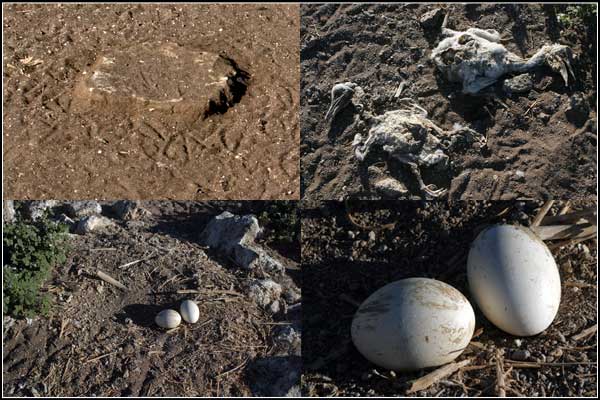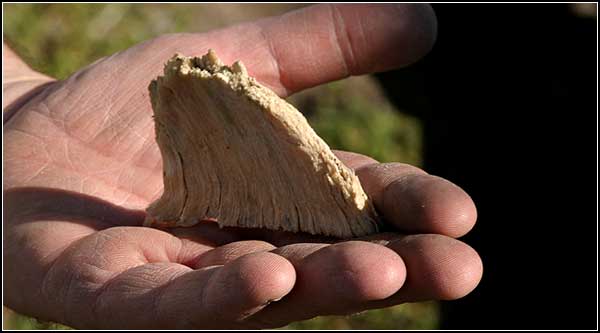Arriving By Airboats –
Clear Lake National Wildlife Refuge is not an easy place to get to. And one
must be prepared for the unexpected. In all my travels out there, in a four-
wheel-drive high-clearance truck, I never saw another motor vehicle. I did
see a cattle drive. The roads can become difficult depending on conditions.
This journey to Clear Lake Dam and Reservoir would be with a U.S. Fish and
Wildlife caravan. Airboats would take us from the dam to the pelican rookery
on a small rocky island in the southwest corner of the lake. In recent years
Fish and Wildlife have asked for volunteers to help on the banding project.
For anyone, a day with the pelican fledglings will make a lasting impression.
The Place to Be To Interact With Pelican Fledglings –
Clear Lake Refuge contains one of the only two remaining white pelican colonies
in California. Average production is 1,400 pelican fledglings each year.
Tulelake is Only A Couple of Miles to the West –
Tulelake is less than 20 miles, as the pelican flies, northwest of Clear Lake
National Wildlife Refuge. There is a low lying volcanic ridge that separates
Tule Lake Basin and Clear Lake Basin. Lost River, 60 miles long, begins at Clear
Lake and arcs itself around Carr Butte and Bryant Mountain and ends up entering
Tule Lake National Wildlife Refuge. 46 miles of Lost River are in Oregon
and 14 miles are in California where it begins and ends, less than ten miles
from its source.
Have You Ever Tried to Grab An Unwilling Pelican? –
First, build a pen and then round up unwilling pelicans. Pelican banding at the Clear
Lake Corral. United States Fish and Wildlife have been banding young pelicans
at Clear Lake since 1963. Controlling young pelicans is not an easy task.
Where Do Pelicans Go And Come From? –
U.S. Fish and Wildlife bands young pelicans at Clear Lake to see where the pelicans
go and how their general health is. This is their northern grounds. They arrive
here in early March from the California Central Valley, Mexico and
Central America. They leave by early November. A few will stay longer.
Not All Pelican Eggs Hatch and Not All Youngsters Survive –
Life can be harsh for those trying to survive. Above we can see the footprints
of hopefully successful fledglings, two carcasses, side by side, and eggs that
most likely will be food for other creatures since all living creatures have
needs – primarily water, food, and shelter
It is Hot, Noisy and Dirty But Someone Has to Do It –
These pelican fledglings are 50 some days old. Their parents flew off in the
morning to catch fish to eat in the Tule Lake and Lower Klamath National Wildlife
Refuges. On this day, 97 pelicans were banded.
To Better Understand Our Friends the American white Pelicans –
Retrieved bands provide information on pelican longevity, dispersal and
migratory patterns. There is a price to pay: the banding scene is chaotic
and disturbed young pelicans have long beaks.
Some Think This Is An Example Of Where the Term “Horny” Comes From –
A seasonal “horn” appears on the upper bill of both pelican sexes at the
beginning of breeding season and persists until the young hatch. As the
summer wanes, the horns become weathered and jagged, eventually falling off.
These can be found in large numbers on breeding grounds.
Only A Few Have The Privilege of Experiencing This Moment –
This trip to Clear lake National Wildlife Refuge’s pelican rookery took place
on June 29, 2005. Joining the banding expedition was a PBS TV crew from
Portland, Oregon. The heat, dust and general chaos, makes work challenging
for a camera-person. The bottom right hand photo is a photo taken on August
18, 1992 when the lake was going dry from drought. Droughts have revisited
several times including the 2001 Klamath Project water shutoff and on-going
2012 -14 drought. Drought and flood, feast and famine, are the nature of
things throughout geologic history.
Soon, the Banding Will Be Done And the Strange Humans Will Leave –
The pelican banding expedition, which left Tulelake’s U.S. Fish and Wildlife
headquarters before sunrise, will depart the rocky island around noon.
There will be few signs that humans were here, and those that remain will be
erased by time, winds, lapping shoreline and pelican tracks.
To see more about Clear Lake National Wildlife Refuge
To see more aboutClear Lake Dam and Reservoir Refuge
©2014 Anders Tomlinson, all rights reserved.




















